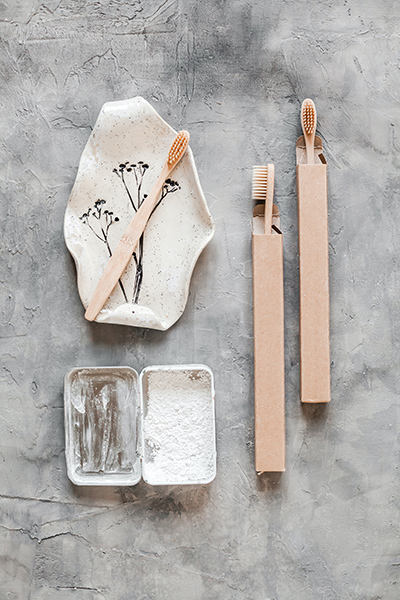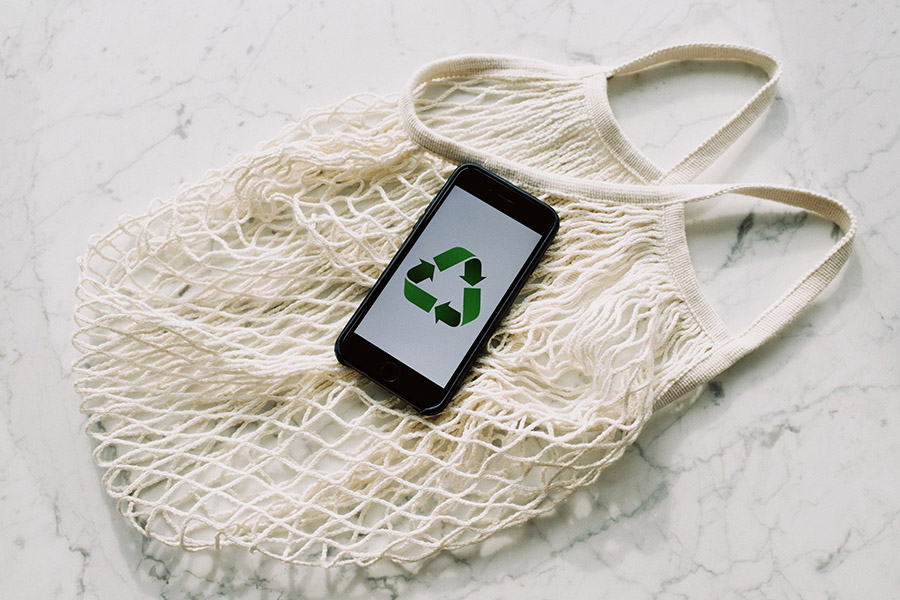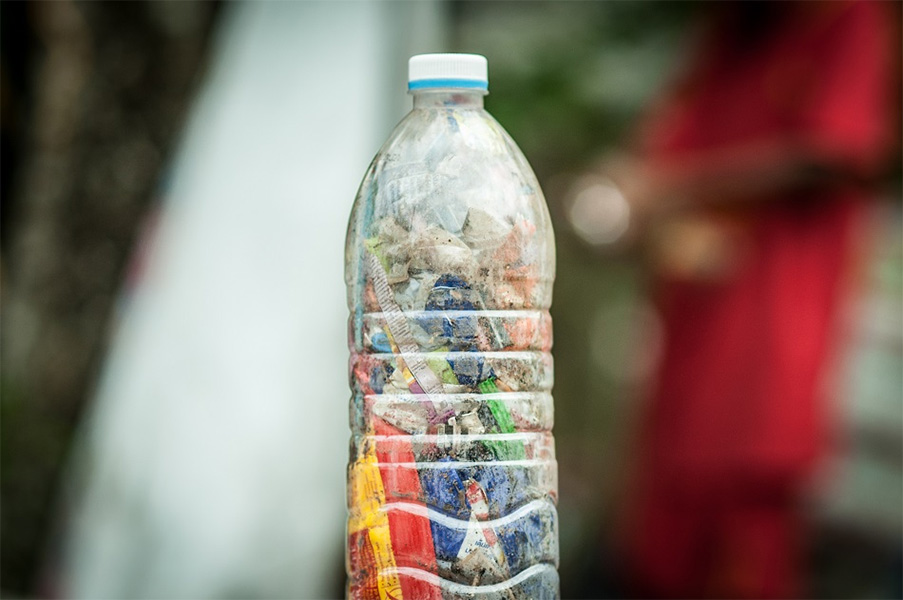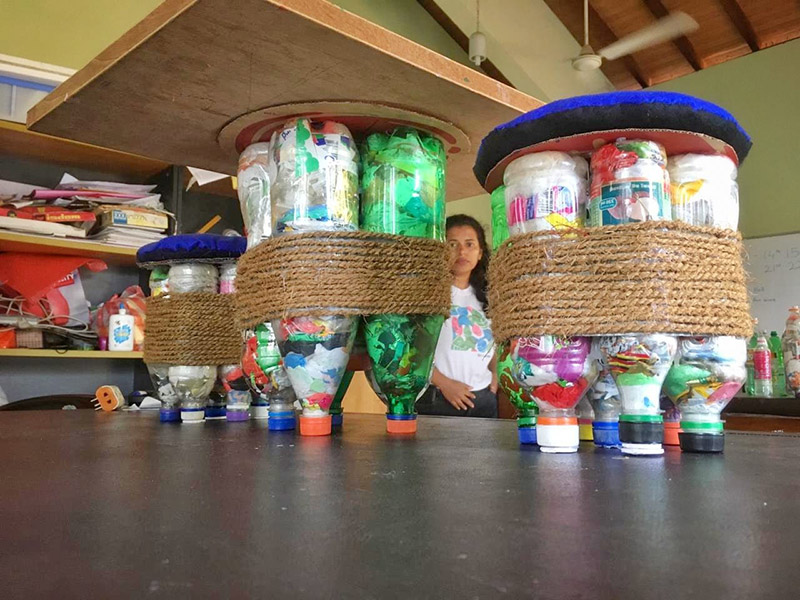
This is straight out of Sustainability 101 and is probably something you’ve already heard countless times - which makes it that much more significant. If leading a conscious lifestyle peaks your interest, the first item on your agenda should be to track your plastic consumption. This pans out to your purchasing decisions, including your grocery shopping, and even your everyday choices, like your morning coffee.
It’s important to cut down your daily plastic consumption to a minimum and turn to eco-conscious businesses that actively make an effort to provide you with similar goods and services at a lesser risk to the environment. In regards to food deliveries, I’d recommend supporting restaurants such as Brew 1867 and Tea Avenue that offer great food with lovely eco-friendly packaging. For sustainable swaps for your everyday items & personal care, have a look at my previous article for 15 alternatives that you can opt for.

Recycling refers to the process of converting materials that would generally be thrown in the garbage into new products. In this context, throwing away your plastic waste with the rest of your trash typically results in plastic pollution. Therefore, it’s important to segregate your garbage into biodegradable & non-biodegradable waste and recycle the latter as required. It’s also in good practice to support businesses that produce recycled products and consciously choose to infuse such products into your lifestyle.
Eco Friends Sri Lanka offers a fantastic means for you to collect your recyclable waste - be it paper, plastic, glass or metal, and have them recycled. Their team will pick up the waste and deliver it directly to a recycler, making it all the more simpler for you. It’s as easy as downloading their app “EcoFriends'' and subscribing to their service.

Upcycling refers to turning objects which you don’t use into those that you do. This usually goes hand in hand with “reusing”, albeit with a twist of DIY to it. A glance at YouTube will give you an idea on just how creative you can get with your upcycling - it truly leaves no stone unturned.
To get you started, here’s a step by step guide by The Pearl Protectors on a simple upcycling project on how to create a self-watering plastic bottle planter;

Marker
Plastic bottle
Soil
Seeds
Water
Yarn/ strip of cloth
A pointed tool [e.g. An old screw driver]
Hammer
Scissors
Draw a line around the center of the bottle using the marker.
Using the scissors, carefully cut the bottle along the line. This will separate the bottle into two.
Untwist the bottle cap. Using the pointed tool and the hammer, carefully punch a hole through the centre of the bottle cap.
Thread the yarn/ strip of cloth through the hole in the cap like a makeshift wick. Twist the cap back onto the bottle.
Fill the bottom of the bottle with water.
Add soil to the top of the bottle and plant the seed of your choice.
Fit the top of the bottle onto the bottom of the bottle to create a makeshift planter.
Place your upcycled self-watering plastic bottle planter in an area with sunlight.
Refill the water as necessary as the seeds sprout and grow into a full-fledged plant

Eco Bricks are a zero-cost solution to plastic pollution that essentially act as building blocks for green spaces. In an era overrun by plastic, it can be almost impossible to completely cut down your consumption. Therefore, Eco Bricks are a great way to reduce your contribution to plastic pollution. In fact, The Pearl Protectors claim that a single PET bottle used to create an Eco Brick can pack up waste generated during a 3 month duration.
Eco Bricks are incredibly easy to make, and are not all time-consuming. They can be used to make chairs and tables, and can even replace bricks in construction projects. Here’s a step by step guide on how to make your own Eco Bricks, as directed by The Pearl Protectors;

1.5 liter PET bottle
Scissors
1.5 foot stick
Dried plastic wrapping/ polythene waste
Cut waste into smaller pieces.
Insert the shredded waste into the bottle, bits at a time.
Use the stick to layer the waste at the base of the bottle.
Continue to add waste.
Press hard using the stick to finely pack the waste layers on the bottom.
Continue the previous steps until the bottle is filled up.
Seal the lid tight.
Your Eco Brick should now weigh about 500g. When squeezed, it should feel as hard as a solid brick. Well done you!

Cut plastic bags & wrappers to avoid air bubbles inside the bottle.
Make sure the waste is dry and devoid of food contamination [wash and dry where necessary].
Overexerting pressure using the stick may cause the bottle to rupture, in which case you will need to begin all over again. This will resolve with practice.
Needless to say, leading a sustainable lifestyle requires self control and patience. It helps to keep in mind that we go through the trouble of finding eco-friendly alternatives for the sake of our planet, so that it will sustain our future generations. Every conscious decision you make is a step forward for humanity.







